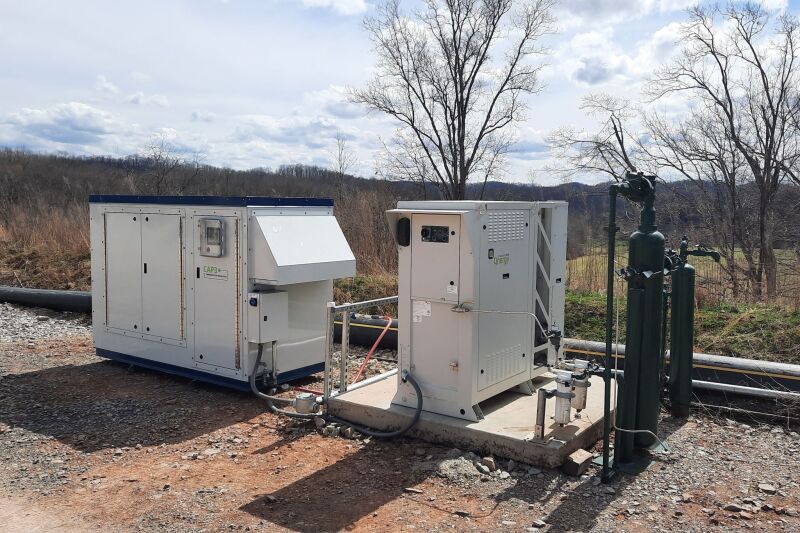TotalEnergies announced this week plans to deploy a new technology to replace the pneumatic systems that are powered by and also vent a substantial volume of methane at its Barnett Shale operating area in north Texas. The Paris-based supermajor said the move will eliminate about 7,000 tons of methane emissions annually by 2024.
The technology comes from Qnergy, which has developed a compressed-air pneumatic system that is coupled with a methane-fueled power-generation unit. The power unit is based around the Stirling engine concept that relies on cyclic compression and the expansion of a gas, or working fluid, to convert heat energy into kinetic energy.
The companies said that a pilot project in March at one of TotalEnergies’ Barnett sites demonstrated the Stirling-based pneumatic system’s reliability. The test also showed the Qnergy system produced 98% less methane venting emissions than a conventional pneumatic system that uses pressurized methane to control process equipment.
TotalEnergies is planning to install 100 of the Qnergy units in the Barnett by 2022 and will add 300 more by the end of 2024. Going forward, the operator said all projects in the Barnett will be designed without conventional methane-venting systems.
TotalEnegies has been the sole operator of 215,000 net acres in the gas-rich Barnett since it exercised its rights in 2016 to acquire the 75% stake in the asset that was owned by its then joint-venture partner Chesapeake Energy.
“To fully play its role in the energy transition, notably as a substitute for coal, the integrated natural-gas chain must limit its methane emissions as much as possible,” Carole Le Gall, senior vice president of sustainability and climate at TotalEnergies, said in a statement.
She added that the technology deployment is tied to the company’s wider ambition to cut its methane emissions by 20% from 2020 to 2025. TotalEnergies is a member of the Oil and Gas Climate Initiative, which led a $10-million Series B investment round in Qnergy in April 2020.
Ory Zik, CEO of Qnergy, also said in the announcement that he is “thrilled” to be part of TotalEnergie’s emission-reduction plan and added that that the 100-unit order “marks the beginning of a new scale of emission mitigation” for the pneumatic devices sector.
In this JPT article in 2019, Qnergy explained how it uses helium as the working fluid to generate electricity from any type of heat source. The company also noted that, while Stirling engine applications have proven difficult to achieve since the technology was first introduced in the 1800s, it has overcome the barriers thanks to enablers such as laser welding for manufacturing and lower-cost electronics.
It is estimated that millions of methane-powered devices called pneumatic controllers are used across the world’s oil and gas fields to measure temperature, pressure, and automatically correct production systems back to their setpoints. Their ubiquity has also earned methane-powered pneumatic controllers increased scrutiny in recent years since they routinely bleed out the greenhouse gas.
In a 2019 report, the US Environmental Protection Agency said pneumatic devices were reported by operators to be the number one source of methane emissions from US onshore production operations, accounting for more than 25 million metric tons per year.


